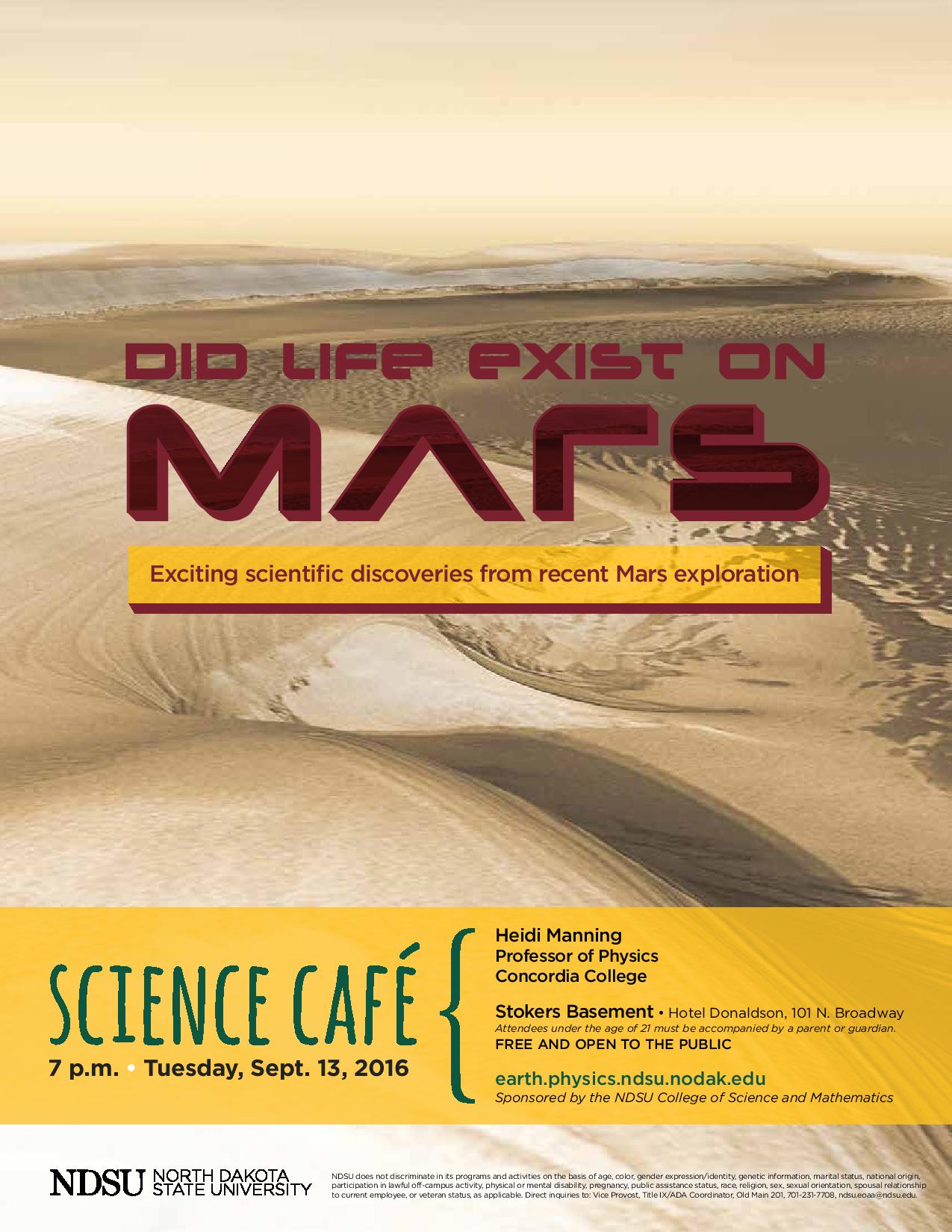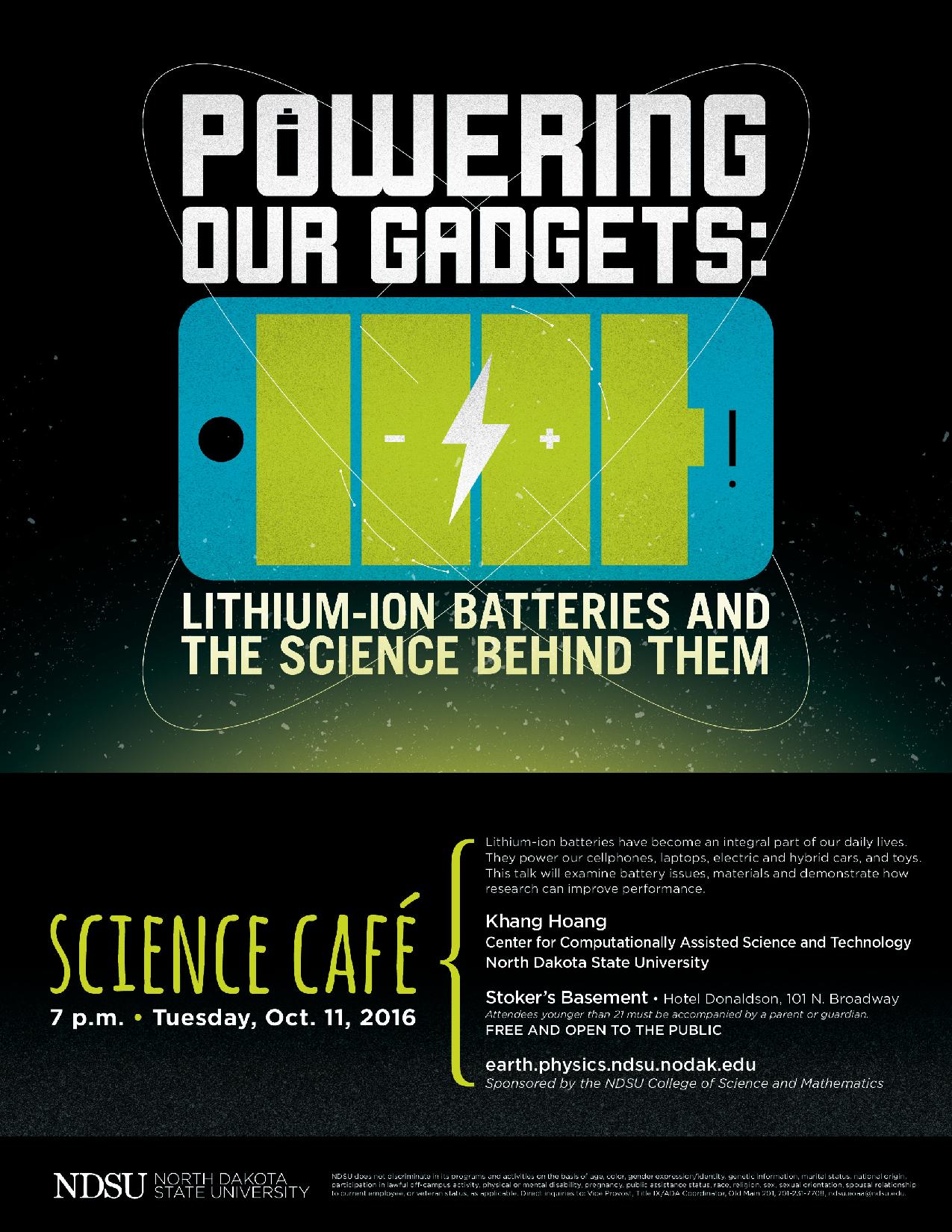
Mars Rocks!
Heidi Manning
Ph.D., Professor of Physics
Chair, Department of Physics
Concordia College
Abstract: The search for life off of the Earth has been a scientific objective of many space exploration missions. In the recent decades, Mars has been the destination for many of these missions. Today, Mars is a cold, dry planet, but long ago, it was a warm, wet place. At that time, the conditions on Mars were very similar to those on Earth; the time when life began on Earth. Could life have existed on Mars at that time? Scientists are unlocking the secrets of the young Mars through the study of the rocks and the atmosphere present today. The Curiosity Rover with her 17 cameras and 10 scientific instruments has been exploring Mars for the past four years. This talk with highlight some of the most exciting scientific discoveries of the mission as we continue the quest to understand if Mars was once habitable.

Lithium-ion batteries (and the science behind them)
Khang Hoang
Center for Computationally Assisted Science and Technology
North Dakota State University
Abstract: Abstract: Lithium-ion batteries have become an integral part of our daily lives. They power our cellphones, laptops, electric and hybrid cars, and toys. How do lithium-ion batteries work? What materials are being used in the batteries in our iPhone or in Tesla Model S? Why won't our batteries last all day? And why their performance decrease over time? This talk will discuss the science behind lithium-ion batteries and some of their issues. It will also examine a few battery materials and demonstrate how materials research can help produce materials with better performance.

What do tree rings tell about North Dakota's past?
Joseph Zeleznik
NDSU Natural Resources Management
Abstract: The amount of information stored in tree rings is amazing. From droughts to floods, insect outbreaks to wildfires, the thin layer of wood that makes up the annual tree ring can provide us with a variety of data and clues about past climates. Though environmental extremes are often recorded, the tree ring integrates a number of environmental factors that change throughout the growing season. Teasing out those differences is both challenging and exciting. Relatively local events such as Red River floods and Badlands wildfires have been recorded in tree rings; regional trends such as widespread, long-term droughts show up as well. Please join us as we explore the science and applied lessons of dendrochronology.